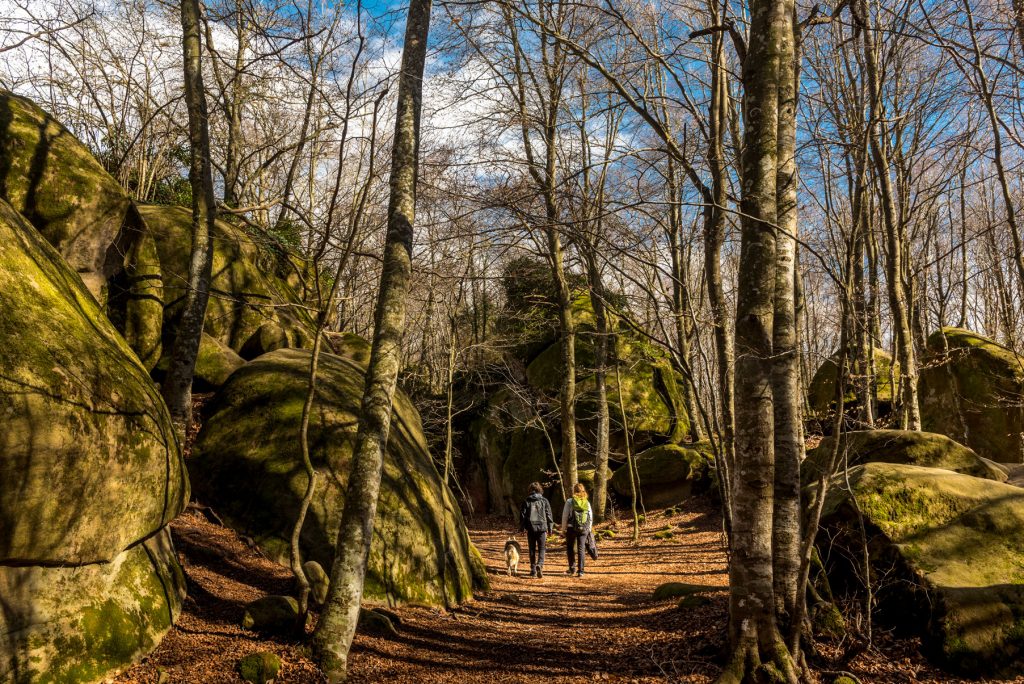These months of September - October we have trained as Guides of Natural Park of Volcanic Zone La Garrotxa. A very interesting course, taught by historians, geologists, volcanologists and biologists, among others, great connoisseurs of La Garrotxa.
We have been able to deepen our understanding of the environment in which we live, focusing on all the important aspects that make it up:
Thus, we start from the base, entering with the rocks that form the region, with a predominance of Sedimentary Rocks such as the sandstones of the Transversal Range and the Limestone of Alta Garrotxa. However, with a large influx of Magmatic Rocks of Volcanic origin, in La Garrotxa we have the best volcanic landscape in the Iberian Peninsula, with about forty volcanic cones. Volcanism in La Garrotxa began 700,000 years ago and the last eruption we had was 11,500 years ago with the eruption of the Croscat - Santa Margarita - Pomareda system. It is not ruled out that there may be a new eruption in the area and that the geodynamic conditions of La Garrotxa have not changed and therefore volcanism is not extinct in the area. In La Garrotxa we find volcanic cones formed from strombolian eruptive activities, as is the case of the Croscat Volcano, Montsacopa, ... we also find craters formed by phreatomagmatic activities, such as the case of the Santa Margarita Volcano and then, also , effusive activities, which give way to lava flows (such as the lava flow under the Fageda d'en Jordà, from the same Croscat) and dam lakes (such as the Vall d'en Bas). We can also find lava flows in sight where we can see their different formations of columns and slabs such as the flows of Sant Joan les Fonts or the spectacular basaltic cliff of Castellfollit de la Roca.
From the rocks we move to the natural environments, the coating that gives color to the landscape and that here in La Garrotxa, makes it special, especially in times like autumn and spring and we have a great abundance of deciduous forest. We have learned to identify the most important species of trees and shrubs in the different natural environments that we find in La Garrotxa such as: the beech, with the predominance of the imposing Beech, the humid oak, important and characteristic of the Olot area, with the Roures Pènol, the dry oak grove with the Roures Martinencs, the riparian forest, the mountain holm oak grove, the most extensive in the whole region and finally, the coastal holm oak grove, where we find few areas with this atmosphere and, la Garrotxa, is a humid and cold region, with an Atlantic climate and for this reason, we have natural environments more typical of Central Europe than of the Mediterranean climate.
Once we have analyzed the landscape we find, we have delved into human evolution about this landscape, how we have inhabited and transformed it, from the first men to the present day. Thus, we have known where they lived or where the first men passed in La Garrotxa, which was specifically in the Vall del Llémena during the Lower Paleolithic, then the Mesolithic and Neolithic, where for the first time, La Garrotxa experienced a considerable occupation of the territory especially in the area of the Vall del Llierca, but also in the Vall del Fluvià. Later, the Ages of Metals and then the evolution towards the Iberians, where in La Garrotxa we find, for example, the village of Boscarró in Sant Joan les Fonts and the possible Olotssitani? We also find evidence of the passage of the Romans still preserving the Via Annia. The Medieval Age in La Garrotxa is the period in which we find the most footprint. From many buildings such as the large number of Romanesque hermitages, to really important events, such as the REVOLTA REMENÇA, the first organized social revolt of the European peasantry and which began in La Garrotxa, with the main center in the Vall d'Hostoles, with Francesc de Verntallat at the head, born in the Vall d'en Bas. We continue with the Modern Age, with mythical characters such as Joan Sala i Ferrer, Serrallonga, born in Les Guillaries but who also acted in the area of La Garrotxa, to end with the Contemporary Age, where the Wars had a strong impact. Carlines but also the Pictorial School of Olot with the Vayredas. In the twentieth century, with the Civil War, until today, that we are part and evolution of all this history, and that when you analyze, you realize that it has not changed so much, made up and modernized, we continue to repeat canons of the past which should not be repeated.

Follow us on our social networks Instagram, Facebook, Twitter.